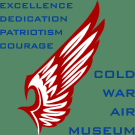With the transmission back in place, the turbine engines have been reinstalled. As with the transmission, the bright colors on the engine components help give the bird a "like new" appearance as it goes back together. But the colors are only a small expression of the work and attention to detail given to the process.
It seems like all aircraft (especially helicopters) are required to have one or more tight spaces where something has to be checked or connected. Even with access panels removed long and skinny arms and fingers are often desirable and sometimes required. With the intake preheat not yet installed on the right engine, a moment of such "tight squeeze concentration" was captured above.
This front view shows one of the specialized pieces of standard field equipment, a ladder-bridge, used to access the front of the engine compartment over the nose of the aircraft.
The four forward facing air intakes are prominent in this view. The center square opening (where a head is inserted above) is covered by a grilled panel after work is completed. Left and right of the square opening are the turbine intakes and the large round opening on top feeds the radiator assemblies in the transmission compartment.
As the exterior was restored, so were the markings and insignia. The red alignment indicators for the dzus fasteners allow visual confirmation during preflight that the compartments are closed and locked.
This Red Star-Roundel combination (appropriate for the period prior the breakup), was run through a computer program in order to match it to the curved surfaces underneath.












